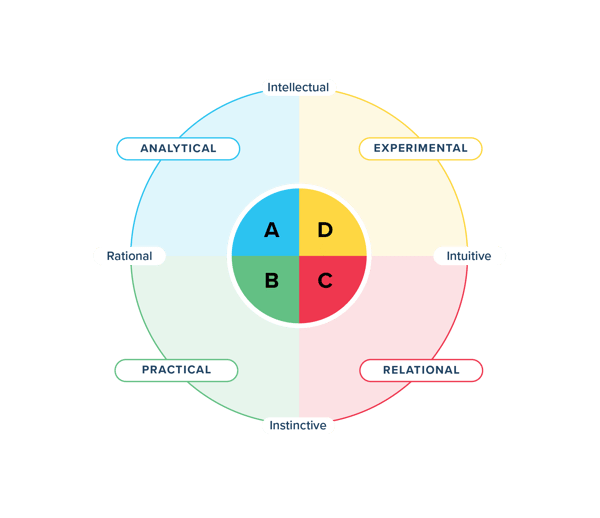Few people wake up and decide to create confusion or conflict at work. And yet, these remain constant challenges inside organizations and teams. One of the biggest causes is miscommunication in the workplace, which doesn’t require ill will and often occurs despite everyone’s best efforts.
You can imagine any number of scenarios. Here’s one: A leader sends an email about an important meeting at 2 p.m. However, he’s in the Central time zone, and most of the company is in Eastern, so his 2 p.m. is really 3 p.m. for most of the staff. This email references “the product team” that should attend, but the company has multiple product teams. Finally, this leader attempts to share the agenda, but the wording is unclear, messy, and contains broken hyperlinks, causing multiple replies from frustrated and confused recipients.
That’s only one example of how miscommunication impedes our work, leads to mistakes, and creates conflict in the workplace. This miscommunication takes its toll: 84% of leaders cite “lower productivity, missed deadlines, and increased costs ranking as the top three” drawbacks, according to a survey by Grammarly Business and The Harris Poll. That same survey notes that 68% of respondents lost at least $10,000 of customer business because of miscommunication.
Communication is a never-ending process, but almost everyone can improve. Learn more about how miscommunication manifests in the workplace and how to prevent and resolve it. We’ll also show how Whole Brain® Thinking helps your employees better understand each other’s thinking so they can better understand each other’s communication.
The Difference Between Miscommunication and Misunderstandings
Any communication has two parts — what the sender tries to communicate and how the receiver interprets or understands that message. The terms “miscommunication” and “misunderstanding” are often used interchangeably and are related. But they aren’t the same.
Miscommunication is when the communicator fails to properly convey their intended message clearly and accurately. The sender's intended meaning isn’t transmitted well to the receiver, if at all.
Misunderstandings occur when the recipient misinterprets or misperceives a message. This could be because of a lack of context, user error, or some other factor that results in a missing, incomplete, or incorrect comprehension of the intended meaning.
Both matter, but they represent different sides of the discourse. Most importantly, when you miscommunicate, you’re guaranteed to have misunderstandings.
%20(1).png?width=1200&height=627&name=%5BHG%5D_InternalImage_5%20Ways%20Team%20Leaders%20Can%20Drive%20Transformational%20Change%20(2)%20(1).png)
5 Common Examples of Miscommunication in the Workplace
While we can’t control how people receive and interpret our communication, we can do our best to communicate effectively with the right tools and context. Identifying communication breakdowns is the first step toward solutions. Here are several examples of miscommunication at work.
Lack of Clarity in Instructions or Expectations
Unclear language or vague instructions can lead to miscommunication because the sender isn’t clear about what the person should do, how they should do it, or even what outcome they should achieve. A lack of specificity or guidance increases the chances that the employees won’t understand how to respond, resulting in errors, delays, and other negative business results.
Remember that “clear” instructions can mean different things for different people. Simply telling an experienced salesperson to assess and prospect a new opportunity could be sufficient. They know what to do and how to do it through years of experience. However, a new hire might not know how to get started, what tools or methods to use, or even what they should assess.
Failure to Consider Tone or Nonverbal Cues (Or Their Absence)
How someone says something can be as important as what they say. For example, telling an employee, “What is wrong with you?” in a harsh tone, with crossed arms, and with a frown on their face conveys a far different message than a friend laughing at another friend’s anecdote and saying, “What is wrong with you?”
One of the easiest ways to improve email communication, for example, is to be aware that words won’t convey a tone of voice or nonverbal cues. It’s easy to underestimate how much is conveyed nonverbally through facial expressions, body language, or vocal intonation.
For example, you might greet a co-worker in the hallway with a casual “Hey” and initiate a conversation. You almost certainly won’t end the conversation by saying, “Best,” and then your name. But if you start an email without an introduction and finish it without a signoff, you convey a harsh, impersonal tone that could greatly affect how someone perceives your message.
Language Barriers and Cultural Differences
Culturally thoughtful communication is vital during customer interactions.
Idioms are a common cause of miscommunication when communicating across languages or cultures. Using baseball metaphors such as “trying to hit singles instead of homers” can quickly get the point across to an American audience, but those phrases might not fare so well in France. Likewise, someone might use an innocuous phrase, not realizing that, in another culture, it’s a slang word for something very different and potentially offensive.
Tone and formality also are areas where communication can go awry. For example, many languages have formal and informal pronouns, and cultural norms regarding handshakes can vary.
Ineffective Use of Technology and Communication Tools
Improper or inefficient use of communication tools, such as email, chat platforms, or project management software, can contribute to miscommunication. For instance, if protocol says to use phone calls for urgent situations, sending an employee an email or chat message during an emergency could backfire.
Lack of familiarity with technology features or functions can result in messages being misinterpreted or overlooked. For example, if you fail to chart your activity in a project management system, including closing out completed tasks, you could inadvertently communicate that a project is stalled instead of ready for the next task.
Poor Listening Skills and Selective Attention
Inattentiveness during meetings or conversations can contribute to miscommunication. When someone doesn’t actively listen to and engage with others, they are more prone to misinterpretations or missed information that can harm the quality of communication.
Moreover, this inattention or selective attention compounds when that person goes to communicate on the matter, they’re likely to make mistakes or exclude key information that they should have absorbed earlier.
How to Deal With Miscommunication at Work
The easiest way to avoid miscommunication at work is to be more thoughtful, deliberate, and considerate in communications. But no one is perfect, and miscommunications are bound to happen. Here are some ideas for reducing and overcoming communication challenges.
Delivering Clear Communication
Be as specific and concise in your language while still explaining yourself thoroughly and with the proper context. Vague or ambiguous terms can contribute to misunderstandings and confusion. Whenever possible, avoid jargon or technical terms that aren’t necessarily familiar to your recipients.
Clarity is essential for providing instructions and setting performance expectations. Be direct about what should be done and why when providing instructions. Break down complex tasks into smaller, manageable steps to facilitate understanding.
When setting expectations, be direct about what outcomes are expected. Don’t sugarcoat or talk around goals, for example, but provide context and background information.
Communication is a two-way activity, so clarity is also useful when checking for understanding. Meanwhile, seeking feedback is a positive form of communication that lets you gauge your effectiveness and improve.
Adapting Communication Styles for Your Audience
Be mindful of cultural differences and language barriers that may impact communication, whether you’re communicating with colleagues or setting up a marketing campaign. When communicating with someone in an acquired language, for example, use clear and simple language, avoiding unnecessarily complex sentence structures, jargon, and idioms. Consider using visual aids or other forms of non-verbal communication to enhance understanding.
Welcoming language is essential when communicating across audiences. Respect and value different perspectives, experiences, and thinking styles. Avoid assumptions about others based on stereotypes or preconceived notions. This extends to using gender-neutral language whenever possible and avoiding language that may exclude or marginalize certain groups.
Another way to think of this is the communication channels you use, especially for internal communication. Your communication strategy should adapt to the method, whether it’s face-to-face conversations, phone calls, official written documents, or anything else.
Addressing Conflicts and Misunderstandings
When conflicts or misunderstandings arise, effective communication becomes even more important. Of course, resolving conflict is easier when you have a culture of healthy psychological safety where team members feel comfortable expressing concerns and addressing disputes openly.
To resolve conflicts and misunderstandings with effective communication, start by building a habit of actively listening, showing empathy, and validating people’s feelings. When your employees feel heard and seen, they’ll be more receptive to your follow-on communication — and less likely to misinterpret it.
In some cases, conflicts may persist or become more complex, requiring additional intervention. If conflicts can't be resolved through open dialogue alone, consider seeking mediation or involving a neutral third party, either formally or informally. An underrated component of good communication is knowing when you need additional perspective.
Teach Good Communication
Good communication skills can be learned and taught. Treat each interaction as a chance to practice what you know, learn through observation and feedback, and apply what you learn to future communication.
At an organizational level, formal communication training and workshops can be valuable for helping employees dig deeper into topics such as situational communication, business norms, nonverbal communication, conflict resolution, and more. These training opportunities help employees understand the impact of their words and actions on others.

How Whole Brain® Thinking Can Reduce Workplace Miscommunication
Whole Brain® Thinking is a powerful methodology that helps individuals and teams understand their own thinking preferences and those of others. This understanding helps people accept different approaches and leverage them for better communication, thinking, and results.
The Whole Brain® Model is based on four quadrants, each representing a different thinking preference:
- The Upper Left Blue A Quadrant specializes in logical, analytical, quantitative, fact-based thinking.
- The Lower Left Green B Quadrant focuses on details and specializes in planning, organizing, and sequencing information.
- The Lower Right Red C Quadrant prioritizes feelings and the interpersonal, emotional, and kinesthetic aspects of a situation.
- The Upper Right Yellow D Quadrant synthesizes and integrates information and is more intuitive and holistic in its thinking.
While everyone might prefer to use one or more thinking preferences, we all have the capability and opportunity to use all four thinking styles daily. No quadrant or combination of quadrants is better or worse than the other.
Here are a few examples of how you can prevent miscommunication when communicating with people with strong preferences for a particular quadrant, keeping in mind that most people have a mix of strong or weak preferences.
- Analytical Thinking (Blue Quadrant): Consider delivering concise information that’s supported by facts and data. Avoid presenting information in a vague or ambiguous manner, especially when not connected to measurable outcomes or goals.
- Practical Thinking (Green Quadrant): When giving directions or setting an agenda, consider your practical thinkers who thrive on organization, clear steps, and process. Ensure you’re unambiguous and coherent regarding steps, timelines, and expected outcomes.
- Relational Thinking (Red Quadrant): Business communication often must focus on numbers, tasks, and deliverables, but never forget that people are on the other side of your message. Relational thinkers bring this home, as they especially emphasize the emotional and interpersonal aspects of work. How you say something matters as much as what you say.
- Innovative Thinking (Yellow Quadrant): Communication can inspire and unleash people to discover great things. Remember this with your Yellow thinkers, who are eager to think outside the box and be creative. Be open to exploring new possibilities and adapting to change.
Communication Starts With You
The first line of defense against miscommunication in the workplace is how you communicate as a leader. When you’re clear, deliberate, measured, and sensitive to your recipient's needs and circumstances, you can improve your communication, reduce confusion and conflict, and foster better team camaraderie, thinking, and outcomes.
Are you looking to improve how you communicate with different thinkers? Check out our free guide.


.png)










